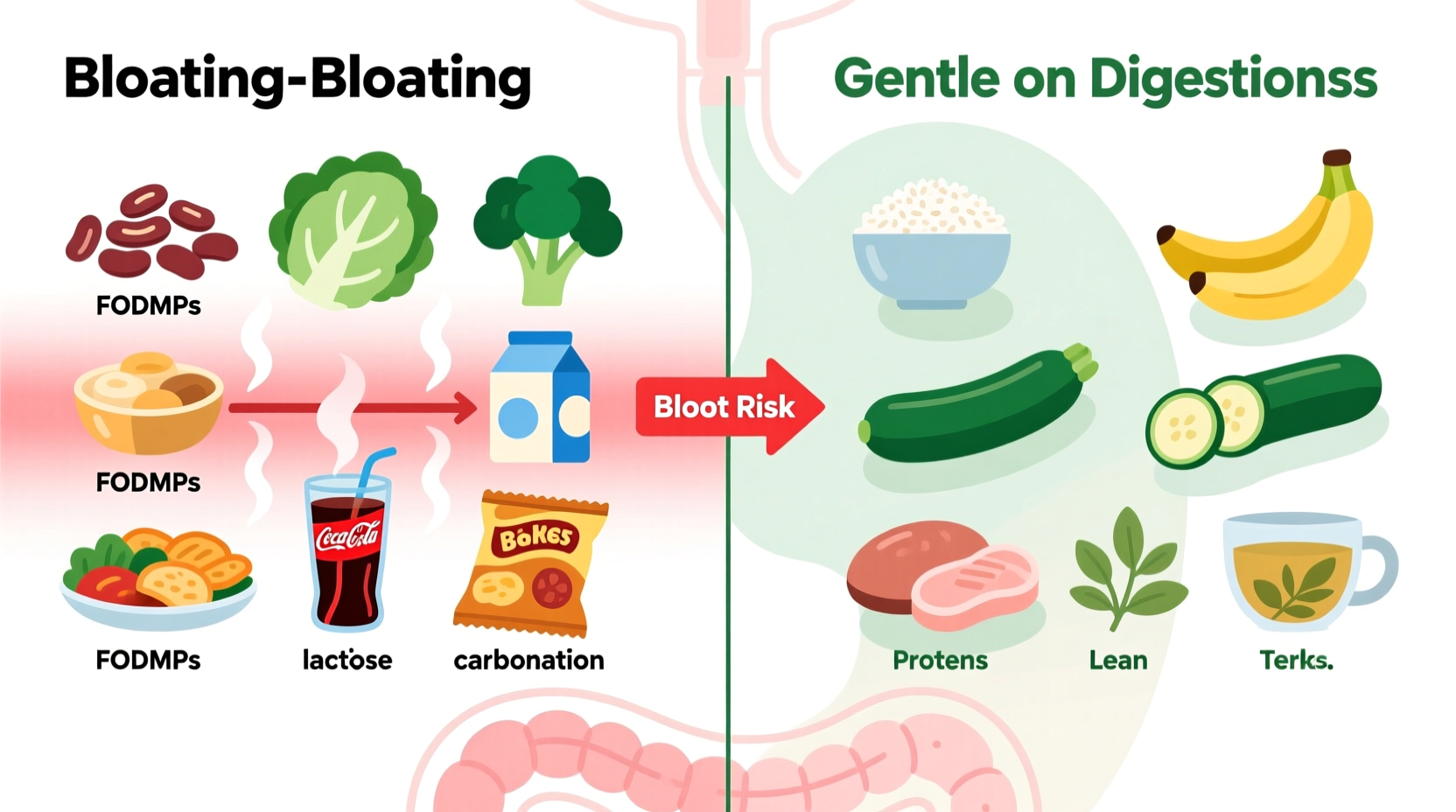Understanding Bloating: More Than Just an Annoyance
That uncomfortable feeling of fullness and pressure in your abdomen isn't just inconvenient—it's your digestive system signaling something's off. Bloating occurs when gas builds up in your gastrointestinal tract, often from certain foods that are difficult to break down. While occasional bloating is normal, frequent discomfort could indicate food sensitivities or digestive issues worth addressing.
Research from the National Institute of Diabetes and Digestive and Kidney Diseases shows that gas production varies significantly between individuals based on gut bacteria composition and digestive enzyme levels. This explains why some people tolerate bloating foods better than others.
Your Practical Guide to Bloating Foods and Solutions
High-FODMAP Foods: The Primary Culprits
Fermentable Oligosaccharides, Disaccharides, Monosaccharides, and Polyols (FODMAPs) are short-chain carbohydrates that many people struggle to digest. When these reach your large intestine undigested, gut bacteria ferment them, producing gas and causing bloating.
| High-Bloating Potential Foods | Lower-Bloating Alternatives | Why It Helps |
|---|---|---|
| Onions, garlic | Chives, garlic-infused oil | Contains flavor compounds without problematic fructans |
| Wheat, rye | Gluten-free oats, quinoa | Avoids fructans found in gluten-containing grains |
| Apples, pears | Strawberries, oranges | Lower in sorbitol and fructose ratios that cause issues |
| Beans, lentils | Small portions with epazote herb | Reduces gas production during digestion |
Dairy Products: When Lactose Becomes a Problem
Approximately 68% of the global population has some degree of lactose intolerance, according to research published in the US National Library of Medicine. When your body lacks sufficient lactase enzyme, undigested lactose ferments in the colon, causing gas, bloating, and discomfort.
Practical solution: Try lactose-free dairy products or add lactase enzyme drops to regular milk 24 hours before consumption. Hard cheeses like cheddar and Swiss typically contain minimal lactose and are better tolerated.
Carbonated Beverages and Artificial Sweeteners
That fizzy sensation comes from carbon dioxide gas that you're literally drinking. Diet sodas containing sugar alcohols like sorbitol and xylitol are particularly problematic—they draw water into your intestines while gut bacteria ferment them, creating double the gas.

Cruciferous Vegetables and Legumes
Broccoli, cauliflower, cabbage, and beans contain raffinose, a complex sugar your small intestine can't break down. When it reaches your large intestine, bacteria get to work fermenting it—producing significant gas.
Smart preparation tip: Soaking beans for 8-12 hours before cooking and changing the water several times reduces oligosaccharides by up to 50%. For cruciferous vegetables, cooking them thoroughly breaks down some of the complex fibers that cause gas.
Context Matters: Why Some People React Differently
Not everyone experiences bloating from these foods—their impact depends on several factors:
- Gut microbiome composition: People with more gas-producing bacteria experience worse symptoms
- Digestive enzyme levels: Natural production of lactase and other enzymes varies by ethnicity and age
- Eating speed: Consuming food too quickly introduces excess air into your digestive system
- Portion size: Many bloating foods are problematic only in larger quantities
According to a Mayo Clinic study, keeping a food diary for two weeks helps identify personal triggers with 85% accuracy—far more effective than eliminating entire food groups unnecessarily.
Practical Strategies to Enjoy Foods Without the Bloat
Smart Food Preparation Techniques
How you prepare bloating foods significantly impacts their digestive effects:
- Soak and rinse: Soak beans overnight, then discard soaking water and rinse thoroughly before cooking
- Cook thoroughly: Raw cruciferous vegetables cause more gas than cooked versions
- Add digestive herbs: Epazote (common in Latin American cooking) or asafoetida (used in Indian cuisine) reduce gas production
- Try sprouting: Sprouted grains and legumes have broken down some complex carbohydrates
Strategic Eating Habits
When and how you eat matters as much as what you eat:
- Eat smaller portions of high-bloating foods spread throughout the day
- Pair gas-producing foods with digestive enzymes or probiotics
- Avoid drinking carbonated beverages with meals
- Chew food thoroughly to aid initial digestion
- Wait 2-3 hours after eating before lying down
When Bloating Signals Something More Serious
While occasional bloating is normal, persistent symptoms could indicate underlying conditions. Consult a healthcare provider if you experience:
- Bloating that lasts more than 24 hours regularly
- Severe pain accompanying bloating
- Unexplained weight loss with digestive issues
- Bloody stools or persistent diarrhea
These could indicate conditions like irritable bowel syndrome (IBS), inflammatory bowel disease (IBD), or celiac disease that require medical diagnosis and treatment.











 浙公网安备
33010002000092号
浙公网安备
33010002000092号 浙B2-20120091-4
浙B2-20120091-4